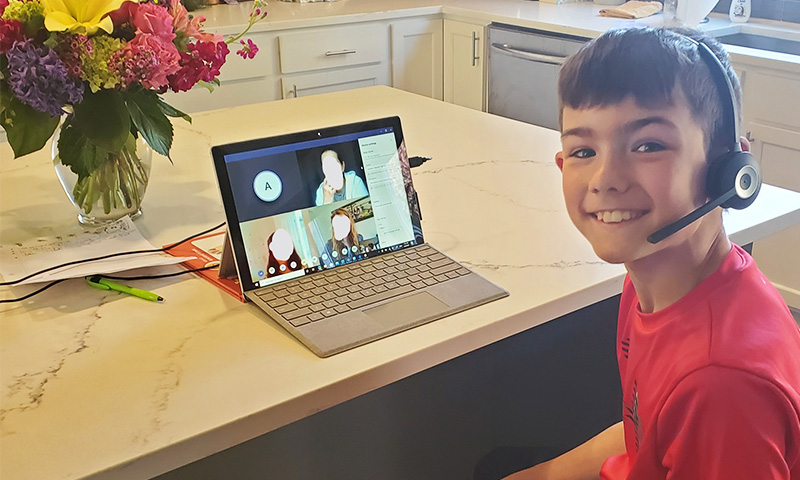Jason Wilmot is the K-12 Industry Lead for Worldwide Education. In his role leading the worldwide execution of the primary and secondary education vision, Jason Wilmot works to ensure Microsoft is a global leader in education transformation around the world. He works directly with the various Product Group leaders, Account Executives, and Strategic Partners to improve student outcomes in the classroom with the support of technology. A recognized education executive is known for crafting transformational education deals that span devices, software, and cloud services, Jason offers a unique blend of experiences. Jason has been with Microsoft since 2004. He has held a variety of leadership roles at Microsoft ranging from operations management, technical product management, and sales leadership. Prior to taking this role, Jason was the Director of Education, supporting our Modern Classroom efforts driving execution of product sales across schools and universities.
“Remote learning is where the student and the educator, or information source, are not physically present in a traditional classroom environment. Information is relayed through technology, such as discussion boards, video conferencing, and online assessments. Remote Learning can occur synchronously with real-time peer-to-peer interaction and collaboration, or asynchronously, with self-paced learning activities that take place independently of the instructor.”
The last few months have been challenging on our family like many around the world as we set up a remote classroom in our house for 2 kids, middle school and elementary-aged. My wife is the proxy teacher and I provide technology support daily as we help administer the lesson plans provided by our teachers. This probably sounds familiar. I admire and commend the school Administration, teachers, parents, and technology providers all around the world that have stepped in to support the shift to remote learning overnight.
All types of remote learning have been utilized over the last few months as teachers and students around the world have been forced to leave the school to continue teaching beyond the physical walls of the classroom. With forced remote learning across the world, I often get asked about technology and how to use technology in a secure manner to deliver remote learning at home. How do we get computers for our students at home? How do we provide every learner a safe connected experience at home? How do we bridge the technology divide in non-equitable situations? How do we ensure students are on track via Technology? Technology is often seen as a unicorn that can solve remote learning. However, Technology is not the most important asset in a remote learning environment. Improving learning outcomes will never be solely about the technology in or out of the classroom. The technology will always be at the forefront of debates on Facebook, but behind the debate, the teacher pedagogy, parental support, and student willingness to learn will ultimately determine the success of any learning environment.

Over the last few months, I have seen my 9-year-old son work on physical worksheets that we printed out at home; watch short videos explaining how to do an assignment; engage in live chat with his fellow students and educator. I have helped my 12-year-old daughter submit assignments through a learning management system; read online books and submit short videos. All these technology platforms can and should be used to facilitate remote learning. Unfortunately, they are not solely going to solve the future of education. They will be debated at length over the next few years as to which medium is best suited for remote learning. However, in the end, it will be a balanced approach. It will be different activities that focus on individual and group work administered by teachers through various means of technology. Teachers were forced into this environment and teaching in a remote learning environment requires technical and pedagogical skills to integrate digital devices into daily instruction. Most teachers were trained exclusively to teach in a physical classroom and have limited training on how to teach in a remote learning environment. Therefore, teachers tried to port the physical classroom into a virtual experience. This has led to a sub-optimal experience for many students around the world. Teachers will need to be empowered to create new materials and be flexible in the delivery of these materials. They will need to focus both on individual work that can be assigned through technology and small group engagements where students interact with one another.
Technology will become more important in the delivery of content and help teachers find new ways to be creative, but technology is not a unicorn for remote learning. Teachers are still the most important asset in any learning environment.




